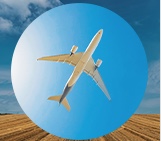Jun-2022
Energy management and sustainability of the downstream industry
Energy management must feature in any strategy in the downstream industry for both environmental impact and economic competitiveness.
Marcio WAGNER Da Silva
Petrobras
Viewed : 12045
Article Summary
The increasing necessity to reduce the environmental impact of fossil fuels has led to a global decarbonisation trend in the energy mix, creating a new challenge for the crude oil production and processing value chain. The downstream industry produces fuels or energy carriers for end uses such as transport. Refining processes use a significant amount of energy, typically from the combustion of less valuable hydrocarbons, resulting in carbon dioxide (CO2) emissions. Considering this fact, minimising the energy intensity of crude oil refining processes is fundamental to improving the sustainability of the downstream business.
Energy management is vital for energy companies, especially oil companies, to achieve sustainable and competitive operations. Nowadays, company strategies must consider the three legs of the sustainability tripod: people, planet, and profit, in this order. In this sense, refiners must consider two factors in their energy management strategies: environmental and economic factors.
Economic driving force
While crude oil is a tradeable commodity, it is of no practical value until refined or converted into oil products: fuels, petrochemical, lubricants, and bitumens. The profitability of a crude oil refinery is directly proportional to its capacity to add value by maximising the production of higher value derivatives. This is illustrated in Equation 1, which presents a simplified concept of the liquid refining margin:
Liquid refining margin = ∑in(Di x Vi) — Pc — (Fc+Vc) (1)
The first term in Equation 1 corresponds to the revenue obtained through the sale of the oil products, represented by the sum of the product of the derivative market value and the volume or weight commercialised. As aforementioned, the profitability or refining margin is directly proportional to the refinery’s capacity to add value to the processed crude slate. Hence, the maximisation of higher added value derivatives leads to the maximisation of the first term in Equation 1.
In Equation 1, the term Pc corresponds to the acquisition cost of crude oil. Refiners have no direct control over the crude oil market or the acquisition cost of crude oil, which is determined by geopolitical conditions in the international market and the demand for oil products. Lower cost, heavy crude oils can reduce the cost of the crude oil feedstock supply, but the processing of heavier crude slates requires more complex refining configurations with higher conversion capacity, raising the operational costs.
The fixed and variable costs (Fc + Vc) represent the operational costs for refineries. Figure 1 shows a simplified scheme for profitability in the downstream industry, highlighting refiners’ cost composition.
Considering that energy consumption represents more than 60% of the total costs of a typical crude oil refinery, the capacity to optimise and reduce energy wastage is a key factor in the competitiveness of the downstream industry. Some relatively simple actions are available to optimise energy consumption in refining assets to achieve this goal.
Available options for energy optimisation
In a typical crude oil refinery, it is possible to identify two basic ways to improve profitability through energy optimisation:
1 Consumption reduction This involves running at lower throughput or lower conversion. As such, it has a direct impact on the yield of products and the quality of the derivative or the auxiliary processes. This option is used in times of low product demand (such as during the recent pandemic), but is less desirable when product demand is high, so it is not a straightforward option.
2 Cost reduction of the energy used This involves optimising energy consumption and minimising wasted energy through energy efficiency and reliability improvements. These actions normally represent a reduction in the total energy consumption of the refinery.
Among the optimisation opportunities, it is required to answer some questions, such as when is it an advantage to use thermal or electric energy, what is the best operating scenario to change electrical equipment to turbines, and what is the best time to maximise the internal power generation in the refinery?
These questions can be answered using adequate simulators, considering key information such as natural gas cost, equipment availability, reliability, and the operating limits for critical processing units like the FCC.
Among the consolidated techniques to optimise energy consumption, we can quote the use of Pinch analysis to reduce requirements for hot utilities in the processing units and maximise the energy recovery from the process. This option is especially attractive in crude oil distillation, FCC, and delayed coking units as these are high energy-consuming processes.
The use of equipment load management systems, monitoring speed for rotating equipment, thermal efficiency monitoring systems, control and monitoring the flare gas emissions, and flow rate measurements for gases discharged to flare systems can help to identify bad actors and promote effective actions to optimise power consumption in the process plant. Focusing on the high energy- consuming units, it is possible to consider the following option to deliver energy savings in crude distillation units:
- Monitoring thermal efficiency of heat exchangers
- Determine optimal opportunities to shut down and clean the heat exchanger network
- Optimise pumparound flow rates
Another high energy-consuming process is the hydrocracking unit; for these units, the following actions can help to reduce the energy intensity of the process:
- Inspect and re-assess the structural integrity of reactor internals during turnaround maintenance shutdown
- Use low ΔP valves (mainly in compressor discharge)
- Avoid the use of compressor control through recirculation strategy
In the face of stricter regulations over the last decades, crude oil refining has become strongly dependent on hydrogen, which is normally produced through an energy-intensive route such as natural gas steam reforming, which is also responsible for significant emissions of CO2. Considering the trend for renewables co-processing in crude oil refineries, which tends to raise even higher the hydrogen demand, it is fundamental to minimise the energy intensity of the hydrogen production processes. This goal can be achieved through the following actions:
- Hydrogen management is required to minimise burning it as fuel
- Apply pressure swing adsorption processes (PSA) to improve the partial pressure and recycling of hydrogen from process units
- Maintain reliability of PSA units
Closer integration between refining and petrochemical assets is another tool to help downstream players optimise energy consumption. Refining assets are typically self-sufficient in steam and power generation, while they may be deficient in hydrogen generation, whereas petrochemical plants can export hydrogen but are deficient in power and steam generation. Thus, the synergy between refining and petrochemical assets can help the players to optimise their energy demand.
Add your rating:
Current Rating: 5

















